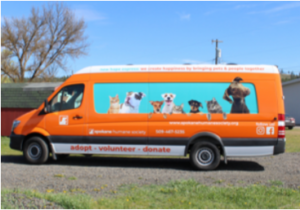 In the challenging landscape of animal welfare, shelters operating on a shoestring budget face unique obstacles in their mission to provide care and find homes for animals in need. Yet, amidst these constraints, lies a world of untapped potential: alternative placement programs. These innovative strategies, including relocation programs, transfer partnerships, and collaborations with breed-specific rescues, offer a lifeline to animals who may not thrive in traditional shelter settings. By embracing these alternative placement programs, shelters can maximize opportunities for animals, expand their reach, and create a brighter future for animals in their care. Continue reading “Alternative Placement Strategies for Animal Shelters on a Shoestring Budget”
In the challenging landscape of animal welfare, shelters operating on a shoestring budget face unique obstacles in their mission to provide care and find homes for animals in need. Yet, amidst these constraints, lies a world of untapped potential: alternative placement programs. These innovative strategies, including relocation programs, transfer partnerships, and collaborations with breed-specific rescues, offer a lifeline to animals who may not thrive in traditional shelter settings. By embracing these alternative placement programs, shelters can maximize opportunities for animals, expand their reach, and create a brighter future for animals in their care. Continue reading “Alternative Placement Strategies for Animal Shelters on a Shoestring Budget”
The Power of Volunteer Engagement
 In the world of altruism, volunteers emerge as radiant beacons of hope, generously dedicating their time, talents, resources, and compassion to noble causes. Nowhere does this spirit shine brighter than in the field of animal welfare. From providing enrichment and socialization to offering administrative assistance and fundraising support, volunteers play a pivotal role in the success and impact of animal shelters. As someone deeply passionate about the welfare of animals, I believe that volunteer engagement is not only vital, it is transformative, enriching the lives of shelter animals and fostering a sense of community and purpose among volunteers. Continue reading “The Power of Volunteer Engagement”
In the world of altruism, volunteers emerge as radiant beacons of hope, generously dedicating their time, talents, resources, and compassion to noble causes. Nowhere does this spirit shine brighter than in the field of animal welfare. From providing enrichment and socialization to offering administrative assistance and fundraising support, volunteers play a pivotal role in the success and impact of animal shelters. As someone deeply passionate about the welfare of animals, I believe that volunteer engagement is not only vital, it is transformative, enriching the lives of shelter animals and fostering a sense of community and purpose among volunteers. Continue reading “The Power of Volunteer Engagement”
Strengthening Communities Through Collaborative Rescue Efforts
 In the realm of animal welfare, collaboration stands as a powerful force for positive change, uniting individuals and organizations in a shared mission to protect and care for animals in need. Among the many collaborative endeavors, partnerships with rescue groups emerge as a key strategy, opening a pathway to expand resources, amplify impact, and unlock new opportunities for animals in need. As we look into the implementation of this strategy, we’ll see the transformative potential of collaboration with rescue groups and unveil innovative approaches to maximize its effectiveness. Continue reading “Strengthening Communities Through Collaborative Rescue Efforts”
In the realm of animal welfare, collaboration stands as a powerful force for positive change, uniting individuals and organizations in a shared mission to protect and care for animals in need. Among the many collaborative endeavors, partnerships with rescue groups emerge as a key strategy, opening a pathway to expand resources, amplify impact, and unlock new opportunities for animals in need. As we look into the implementation of this strategy, we’ll see the transformative potential of collaboration with rescue groups and unveil innovative approaches to maximize its effectiveness. Continue reading “Strengthening Communities Through Collaborative Rescue Efforts”
Innovative Outreach and Marketing Strategies for Animal Shelters on a Budget
 In the ever-evolving landscape of animal welfare, shelters face many challenges in their mission to find loving homes for their residents. While traditional outreach methods have their merits, they often fall short in reaching and engaging potential adopters effectively. In today’s digital age, the imperative for innovation becomes increasingly evident as shelters seek to revolutionize their outreach efforts. This article explores the critical role of innovative strategies in animal shelter outreach and marketing, providing insights and practical guidance to maximize impact and save lives. Continue reading “Innovative Outreach and Marketing Strategies for Animal Shelters on a Budget”
In the ever-evolving landscape of animal welfare, shelters face many challenges in their mission to find loving homes for their residents. While traditional outreach methods have their merits, they often fall short in reaching and engaging potential adopters effectively. In today’s digital age, the imperative for innovation becomes increasingly evident as shelters seek to revolutionize their outreach efforts. This article explores the critical role of innovative strategies in animal shelter outreach and marketing, providing insights and practical guidance to maximize impact and save lives. Continue reading “Innovative Outreach and Marketing Strategies for Animal Shelters on a Budget”
Building Trust Through Transparency and Accountability
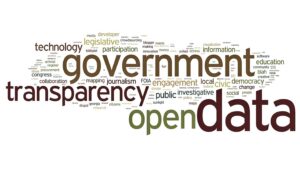 A Commitment to No-Kill Excellence
A Commitment to No-Kill Excellence
In the dynamic landscape of animal welfare, transparency and accountability serve as guiding principles, illuminating the path towards a future where every animal has the opportunity to thrive. By maintaining transparent reporting on shelter statistics, including intake, adoption, and euthanasia rates, shelters not only foster accountability and trust within the community but also gain valuable insights into areas for improvement and measure progress towards achieving no-kill goals. As we delve into the importance of implementing this strategy, let us explore the transformative power of transparency and accountability in advancing the cause of animal welfare. Continue reading “Building Trust Through Transparency and Accountability”
Empowering Communities Through Spay/Neuter Initiatives
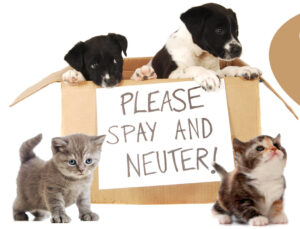 A Path to Preventing Animal Welfare Issues
A Path to Preventing Animal Welfare Issues
Within the complex network of animal welfare, spaying and neutering initiatives emerge as a beacon of hope and transformation, offering a proactive solution to the challenges of pet overpopulation and shelter overcrowding. By implementing low-cost or subsidized spay/neuter programs, shelters and communities not only address the immediate needs of individual animals but also tackle the root causes of animal homelessness and relinquishment. Today’s article reminds us of the importance of spay/neuter initiatives and unveils some creative implementation strategies that empower communities and pave the way for a future where every animal has the opportunity to thrive. Continue reading “Empowering Communities Through Spay/Neuter Initiatives”
The Power of Behavioral Rehabilitation in Under-Budgeted and Under-Staffed Shelters
 In the intricate web of animal welfare, the journey towards finding loving homes for shelter animals often encounters roadblocks in the form of behavioral challenges. These challenges, ranging from fear and anxiety to undesirable behaviors, can significantly hinder an animal’s chances of adoption and long-term success in a home environment. However, within the constraints of under-budgeted and under-staffed shelters, lies an opportunity for innovation, resourcefulness, and unwavering dedication to the well-being of every animal in our care. Let us embark on a transformative exploration of behavioral rehabilitation, uncovering the strategies and principles that empower shelters to nurture the minds and transform the lives of shelter animals. Continue reading “The Power of Behavioral Rehabilitation in Under-Budgeted and Under-Staffed Shelters”
In the intricate web of animal welfare, the journey towards finding loving homes for shelter animals often encounters roadblocks in the form of behavioral challenges. These challenges, ranging from fear and anxiety to undesirable behaviors, can significantly hinder an animal’s chances of adoption and long-term success in a home environment. However, within the constraints of under-budgeted and under-staffed shelters, lies an opportunity for innovation, resourcefulness, and unwavering dedication to the well-being of every animal in our care. Let us embark on a transformative exploration of behavioral rehabilitation, uncovering the strategies and principles that empower shelters to nurture the minds and transform the lives of shelter animals. Continue reading “The Power of Behavioral Rehabilitation in Under-Budgeted and Under-Staffed Shelters”
Innovative Approaches to Medical Rehabilitation: Incremental Veterinary Care
Understanding Incremental Veterinary Care in the Shelter Environment
At its core, incremental veterinary care is a case management strategy that empowers shelter veterinarians to make informed decisions about the allocation of limited resources based on the individual needs of each patient and the overall welfare of the shelter population. This approach acknowledges the inherent financial constraints of shelters while prioritizing the well-being of the animals under their care. Continue reading “Innovative Approaches to Medical Rehabilitation: Incremental Veterinary Care”
Cultivating Compassionate Communities: Harnessing the Power of Community Engagement and Education in Animal Welfare
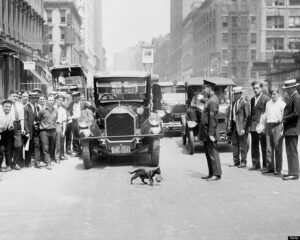
As a fervent advocate for animal welfare, I have witnessed firsthand the profound impact that community engagement and education can have in transforming the lives of animals and the communities they inhabit. By empowering individuals with knowledge, instilling a sense of responsibility, and fostering empathy towards animals, we can effectively address the root causes of pet overpopulation and relinquishment rates. Let us embark on a journey into the many ways community engagement and education can serve as catalysts for positive change in the realm of animal welfare. Continue reading “Cultivating Compassionate Communities: Harnessing the Power of Community Engagement and Education in Animal Welfare”
Unleashing Hope: Building Thriving Foster Care Networks
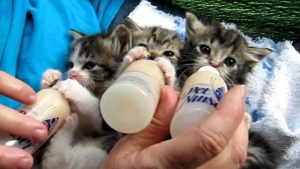 In the realm of animal welfare, few strategies possess the transformative potential and cost-effectiveness of foster programs for under-budgeted and short-staffed shelters. Foster care networks, when cultivated strategically and with community engagement at the forefront, have the power to alleviate overcrowding, reduce stress on shelter animals, and amplify the impact of shelters in their mission to save lives. Let’s explore the nuances of establishing and expanding foster care networks, unlocking their potential to become a cornerstone of compassionate animal care. Continue reading “Unleashing Hope: Building Thriving Foster Care Networks”
In the realm of animal welfare, few strategies possess the transformative potential and cost-effectiveness of foster programs for under-budgeted and short-staffed shelters. Foster care networks, when cultivated strategically and with community engagement at the forefront, have the power to alleviate overcrowding, reduce stress on shelter animals, and amplify the impact of shelters in their mission to save lives. Let’s explore the nuances of establishing and expanding foster care networks, unlocking their potential to become a cornerstone of compassionate animal care. Continue reading “Unleashing Hope: Building Thriving Foster Care Networks”
